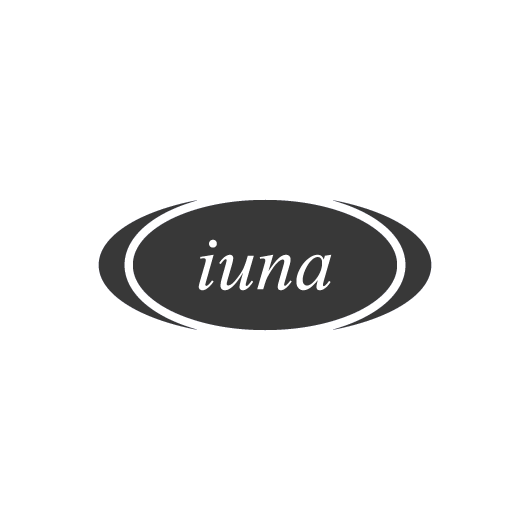Ireland National Children's Food Survey Database (IUNA)
The IUNA Teens Food Survey is a nationally representative database of food consumption in Irish children aged 5 to 12 years.

What is the Irish Universities Nutrition Alliance National Children's Food Survey 2004?
The Irish Universities Nutrition Alliance National Children’s Food Survey 2004 was a cross-sectional study conducted to assess the nutrients and food intake in a nationally representative sample of children aged 5 to 12 years in the Republic of Ireland. The survey was planned and carried out by the nutrition units in University College Cork, University College Dublin, Cork Institute of Technology and Technological University Dublin, which are a part of the Irish Universities Nutrition Alliance (IUNA). The aim of this survey is to establish a nationally representative database of food consumption in teenagers aged 13-18 years. The data generated would be used to cater to both the nutrition and food safety issues of relevance to the development and implementation of public health policy, food safety risk assessment and the needs of the food industry in terms of compliance. Apart from the food consumption, data regarding weight, lifestyle, physical activities, food recipes and choices were collected.
For the Irish Universities Nutrition Alliance National Children’s Food Survey 2004, children aged 5-12 years (293 boys, 301 girls) were selected from 32 secondary schools throughout the Republic of Ireland. The database of secondary schools available from the Department of Education and Science was used to select the schools for the survey. Schools were randomly selected from secondary, vocational and comprehensive/community schools in a manner that the final sample had equal representation, meaning that the percentage of teenagers surveyed attending each of the categories of schools was equal to the percentage of children attending each of these categories of schools according to the database.
The survey was carried out by trained nutritionists. Principals of the selected schools were first contacted for consent, and upon receiving so, introductory letters and information brochures were given to the guardians of the participating children. A 4-day weighed food record was used to collect food and beverage data. At least one weekend day was included for all the survey participants. Food diary and food scales were provided to the participating children, and the guardians were asked to record detailed information regarding the amount, type and brand of all foods, beverages, and nutritional supplements consumed, as well as the amount of any leftovers. The cooking methods used, the packaging size and type, and details of recipes were also recorded. Additionally, data were collected on the time of each eating or drinking occasion, the participant’s definition of each eating or drinking occasion (e.g. morning snack, lunch) and the location of preparation of the meal or snack (e.g. home, school, childminder). Researchers made three visits to the participant’s home over the survey period: an initial training visit to demonstrate how to complete the food diary and use the weighing scales; a second visit 24-36 hours into the recording period to review the diary and clarify details regarding specific food descriptors and quantities; and a final visit one or two days after the recording period had ended to review the last days and collect the food diary.
Availability in Creme Food and Creme Dietary Intake Intelligence Tool
- Available as a dashboard
- Available in a model
- Update frequency: Two to Five Years
- Countries: Ireland
- Age Range: 5-12 years
- Release Date: 2004
Dietary Intake Intelligence Tool
Dietary Intake Intelligence Tool combines the latest dietary intake data with a versatile, simple to use data interrogation tool.
Efficiently find the answers you are looking for.
Datasets available from IUNA
- North South Ireland Food Consumption Survey (1997-1998)
- National Children's Food Survey (2003-2004)
- National Teens’ Food Survey (2005-2006)
- NANS National Adult Nutrition Survey 2008-2010
- National Pre-School Nutrition Survey (2010-2011)
- National Children's Food Survey II (2017-2018)
- National Teens' Food Survey II (2019-2020)
Related questions about the IUNA Children's Food Survey Database
How do I access the Irish Universities Nutrition Alliance National Children's Food Survey 2004 datasets?
The data for Ireland NPNS 2010-2011 survey can be obtained from the official website of IUNA – Irish Universities Nutrition Alliance.
To access Irish Universities Nutrition Alliance National Children’s Food Survey 2004 data,
– Go to the official website of IUNA: https://www.iuna.net/home-old
– Click on the ‘Survey reports’ tab on the website menu
The data is available in the following file (pdf):
We have accessed various raw datasets and have tested and validated them in our models and produced visual analytics tools in dashboards. We can facilitate requesting permission for use of the above raw data for use in our models.
How is Irish Universities Nutrition Alliance National Children's Food Survey 2004 database used by companies, institutes and organizations?
Irish Universities Nutrition Alliance National Children’s Food Survey 2004 are used widely for research related to nutrition, public health and food safety. The datasets support the work of agencies that are responsible for food and nutrition policy and regulation in Ireland and the European Union.
The following are some usages for NPNS 2010-2011 survey datasets for companies, the food industry and policymakers:
- To assess the typical food consumption patterns of children in Ireland.
- To calculate the average amount of nutrients (micronutrients and macronutrients) consumed by the early schoolgoing children of Ireland using models such as Creme Nutrition
- To develop and design food products and production processes to ensure a healthy intake of essential nutrients among the Irish children
- For producers and industries to use the database as a reference tool while introducing a new food item in the market for children
- To assess the relationship between socio-economic status, physical activities and other variables in the health and well-being of the Irish children
- To assess exposure to chemical and biological hazards in foods using tools such as Creme Food Safety